If you have seen how the chestnut alleys bloom, then you will certainly want to go under your windows these amazing trees. The flowering of chestnuts is a really amazing spectacle - Crohn becomes magnificent, and with the onset of spring on the tree "ignite" tens of candles with small white or gentle pink flowers. Kashtan is famous not only to the beauty of flowering, but also useful properties - both flowers and fruits have a healing property, so many want to grow chestnuts in their yard or in the country area. How to plant chestnut, not everyone knows.
Before you know how to plant and grow a brown tree, let's figure it out more about what tree there will be a conversation today, since some chestnuts can be somewhat. Ordinary chestnut and "horse" are different plants. The principle of flowering and fruiting in the trees is the same, only the fruits of horse chestnut give bitterness, so they cannot be eaten. Such chestnuts are only suitable as feed for livestock.
If we are talking about the cultivation of chestnuts, then many imply horse chestnut. Do not be discouraged at once that you will not be able to taste these delicious fruits, the tree will come in handy for landscaping open areas and the rooking of the roads, and the fruits, despite the characteristic bitterness, can be dried and crushed, and then brew and drink a hot drink. It turns out an excellent alternative to coffee.
Read more about growing edible chestnuts
Adult tree reaches a height of 30 or more than 30 meters and refers to the number of long-lived plants. If the tree is grown in favorable conditions, then the chestnut can live an average of up to 500 years! In order to grow this tree, it is necessary to monitor the level of humidity in the soil and constantly fertilize the earth. Chestnut grows on any soils, even on rocky and sandy, only then his growth slows down. The plant does not endure frost and cold weather, so grow edible chestnut in Russia is very problematic.
If you meet a tree in nature, then reaching the age of 25, the chestnut is fruit. In the gardens, the fruction begins only after 40, and even 60 years from the moment of landing! Imagine how many years have to wait for the farmers of the first crop? Such plantations of edible brown trees are transmitted from generation to generation, as well as the business for the sale of fruits.
How to plant houses chestnut
If you have a huge desire to grow chestnut at home, we suggest familiarizing yourself with these recommendations:
- the fruit is suitable as a planting material that fell from the tree - this means that chestnuts reached the stage of maturity;
- how to germinate chestnut: before planting the fruit in the ground, it is necessary to soak it in the tank with water. Try to change the water as often as possible to start the process;
- after 2 weeks, the first processes will appear;
- spring chestnut needs to be put in a pot of ground (the soil should be fertilized and humid) and put in a cool place before the onset of spring. A cellar is suitable or any unheated room, only the air temperature does not fall lower than +5 oWITH;
- sprouts of chestnut sprouts can be in the late spring. It is advisable to choose not a sunny day so that it is not too hot;
- to harde the seedlings 2 weeks before the landing date, it is advisable to carry pots with young chestnuts to the street and leave for 1-2 hours. Every day, time should be increased so that the plants are adapted faster;
- before boarding your young chestnuts must be on the street first all day, and then leave the seedlings for a day.
Landing chestnut in open ground
For planting young seedlings, you need to choose a suitable place. It may be a well-lit plot released from buildings and high plants. It is very important during the period of active growth to provide a lot of light to the plant, so there is a better chestnut near the house and housekeeping. It is necessary to provide edible chestnut growth conditions, as close as possible to natural, so according to the recommendations of specialists, within a radius of 5 km there should be no high plantations that prevent the penetration of sunlight on the crown of trees. It is also important that adult trees do not shadow young seedlings.
The soil for planting chestnuts is better to choose a fertile, the perfect option is a dense black soil. If the earth is sandy or clay, then the roots can hide and scatter in water.
If the soil in your area does not meet the requirements, you can enrich it. For example, in a subline soil you can add sand, and in the sandy mixture - clay. In addition, the primer must enrich the nutritional elements, for this, take compost or overloaded manure.
Landing Chestnut is not troublesome, because you have already managed to grow a sapling out of the fetus, now it remains only to put it in the ground. To do this, it is necessary to dig a square yum, 50-60 cm wide. Now prepare the fertile mixture, mixing the humus with the substrate and adding the dolomite flour. Check the soil acidity, it must be from 5.0 to 6.0, not higher. If the soil is acidic, add lime to it. If you see that the soil misses moisture badly, it is necessary to provide drainage by adding a layer of sand to the prepared pit (no more than 15 cm).
Mix the nutrient mixture and drown into the pit of the seedlock. We hold the young village with your hand and gently cover the layer of the earth. You can compact the Earth around the chestnut with your hands, and then pour water. Install the backup so that the tree is rapidly rooted, since the root system is not yet well developed, with strong winds the tree can fall and die.
Plant care
After planting in the spring, during the warm-time season, it is not necessary to feed the plant, fertilizer is best with the onset of autumn. It may be nitroammophos (on the water bucket 15 g). And another year, in the spring, we recommend enriching the soil with such a mixture: take the water bucket, add 15 g of urea and 1 kg of cowboat. Mix all the components so that you have a liquid solution. Put into the soil under the young tree.
After landing and until the chestnut is strengthened, it is necessary to ensure a constant watering plant, but only in a dry time. If there is enough precipitation, then excessive oveurgement of the soil can destructively affect the growth of edible chestnut.
To saturate the soil with oxygen, try to loosen the earth, and the area of \u200b\u200bthe priority circle spray a layer of peat or wood chips, layer to 10 cm. Each spring must be cut off damaged and dry branches.
If you adhered to these recommendations, then after 2 years in special care, the plant will not need.
Diseases and pests
Regardless of the grade of chestnut (decorative or edible), trees are attacked by wood tick, chestnut moths and mildew. To avoid defeat, it is necessary to observe prophylactic measures - to process 2 times a month of trees with disinfecting solutions.
How to recognize tormentous dew? If you have seen that the leaves of chestnuts began to be covered with white or brown spots, then this is a malicious dew. You can save plants from pest if you enter phosphoric or nitrogen fertilizers, as well as using fungicides.
If the plant was attacked by chestnut moth, then a comprehensive approach is needed. Chemicals will help to get rid of pests that need to handle damaged wood. The popular effective drug is "Lufoks-105", it helps to destroy pests at different growths. The substance is not toxic, so it does not harm the environment and will not destroy bees.
We save the crop
If you managed to wait for the harvest, then it's time to learn how to save the fruits. Chestnuts are almost half consisting of water, which means that the fruits must be placed in a wet environment where the air temperature will not exceed the mark +5 oWITH.
If you decide to plant chestnut from walnut, then the actions are done anew, namely, they first wrap the fruit in the wet clean fabric and put in the refrigerator. We wait until the sprocket appears, which can be placed in the pot of earth. Homemade chestnut leave winter indoors and only in the late spring you can plant a fasten sprout into an open ground.
Features of growing decorative chestnut
Konsky chestnut is much easier than edible. The plant is unpretentious, perfectly tolerates the harsh winter climate and reaches in growth up to 20 meters. When creating favorable conditions - grows up to 25 meters and can live to 280-300 years.
The plant is not afraid of pests and diseases. The transplant of the adult tree carries much better than edible chestnut. It grows well in loose and deep soils, but does not tolerate Sukhovyev. From the hot wind, the leaves of chestnuts begin to yellow, dry and fall.
In the fall, when the fertility period begins, we collect chestnuts falling on Earth, in order to prepare a new planting material for the winter. Save the chestnuts best in the fabric bag so that they do not start and not risen. If you wish, you can wrap the chestnut to wet fabric and put on the bottom shepher of the refrigerator, but best - if you leave the fruits on the glazed loggia, just the nuts will postpone the gradual, that is, the natural temperature drop. As soon as the air temperature on the street drops to 0 oC, chestnuts need to shift into the container and sprinkled with moistled sand.
If you decide to firmly plant the spring brown tree, then you need to prepare the material of the case, that is, to make a laying of 10 chestnuts. After all, it is not known what the germination of the collected nuts will be. It depends on the degree of maturity of chestnuts, but it is unknown to us, he himself got rid of the shell or someone helped him (birds, strong wind, passersby). If all 10 nuts germinate, you can plant more chestnuts or share sprouts with friends and neighbors. As practice shows, only 15 will germinate from 50 chestnuts, and it is accepted after landing only 6-7.
If you decide to germinate only a few chestnuts for landing, then prepare the container and put on the bottom of the sand. Bookmark perform in 1 layer. If we gathered to germinate at the same time a lot of nuts, then it is best to put the material on the extension in the refrigerator.
How to germinate chestnut nuts:
- We take a suitable container (you can tissue bag).
- I fill on 1/3 of the sand.
- We put chestnuts and lay out them with layers so that the first layer is under the layer of wet sand.
- We send a container to the refrigerator to the bottom shelf to provide chestnuts "winter hibernation".
- Approximately 2, and then and 3 months, our nuts will start waking up, they will swell and burst. This sprouts break out.
- If you see that time has passed enough, and chestnuts are not bursting, it is not scary. Remove the container from the refrigerator and put the chestnuts in the wet sand on the windowsill.
- We sprinkle our chestnuts with a thin layer of land, approximately 5 cm and water from time to time, not allowing dryness.
- Waiting time for the germination of chestnut nuts - 4-5 weeks. It also happens that after 2 weeks will begin to appear first sprouts.
- At the end of May, you can transplant chestnuts in open ground. At first, you may seem that the chestnuts are "sitting" in place and do not want to spit, but after a week, the sprout is becoming more and more, the first leaves appear.
- Landing chestnuts is performed in the traditional way: in the prepared hole you need to put a nutritional mixture (a substrate with overworked manure) and smoothly in the center to plant a sprout, not blunting the root neck strongly into the ground. It is best to raise a little hole to 10 cm a bit, given that over time, the soil condenses a little and "comes."
There is another way to plant chestnuts - immediately in open ground. All that will be required of you is to choose the landing site, prepare the soil in advance and make fertilizers. Next, we go to collect chestnuts (a favorable time - the end of September, in October). We make a bookmark to the soil 1 nut every 15 cm. The landing depth is 5 cm. We sprinkle with a mixture of land with sand and trust the whole process of Mother Nature. In mid-May, you can visit our experimental bed and look at the first inputs.
Landing and growing chestnuts Look at the video:

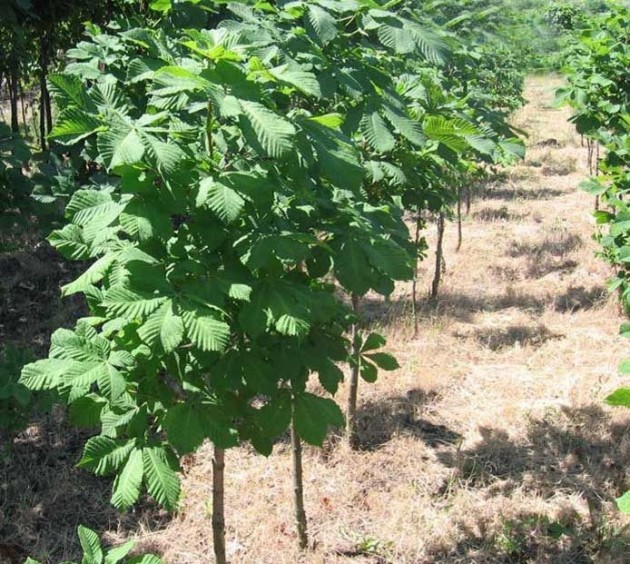
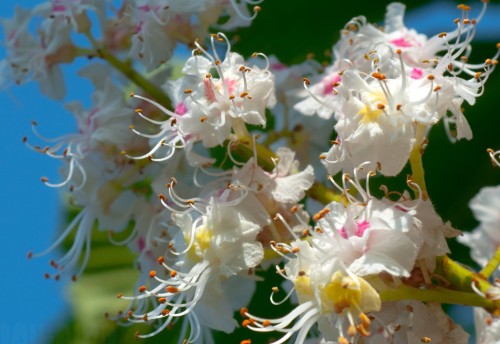
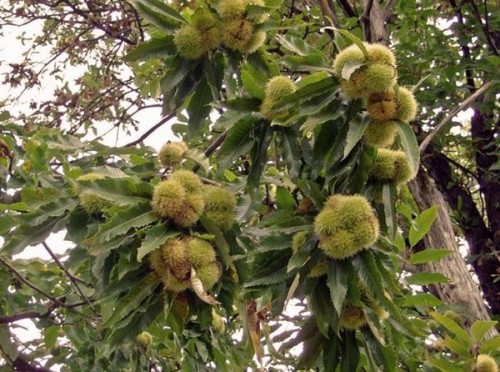
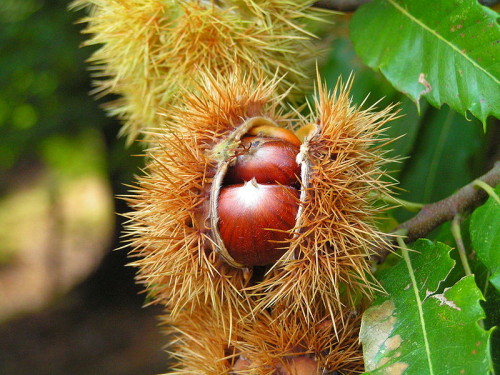
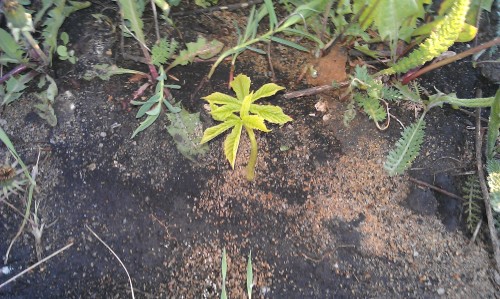
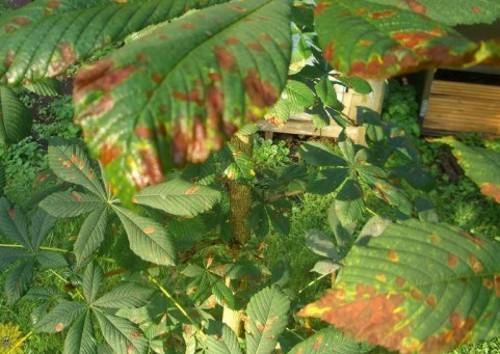
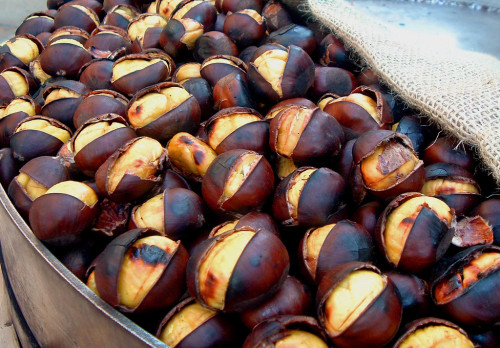
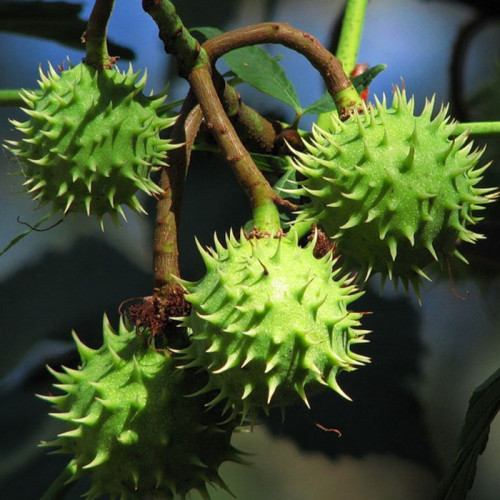
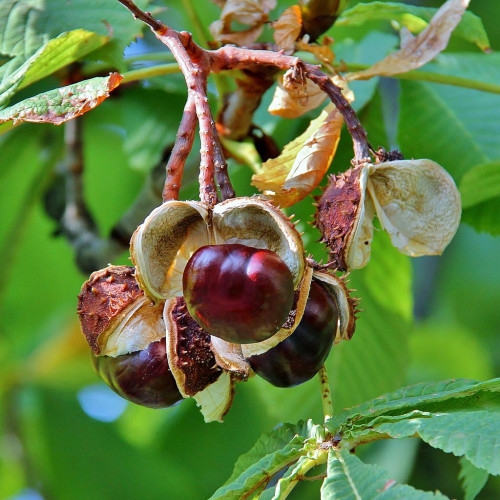
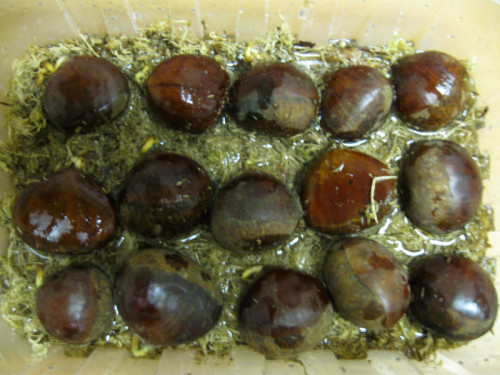
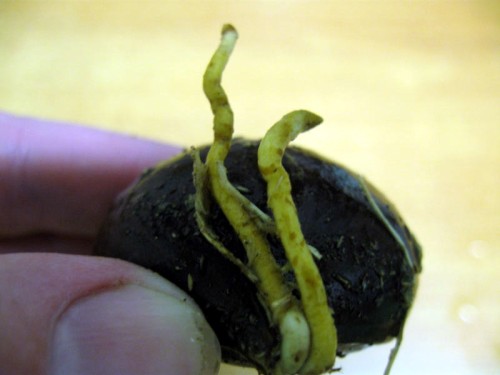
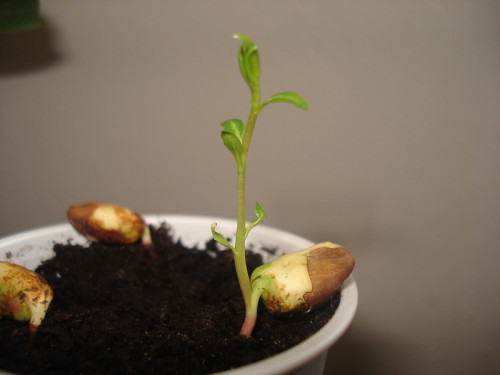
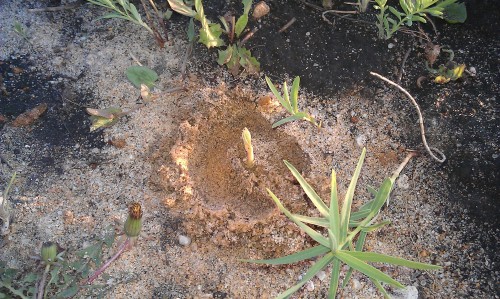
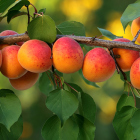
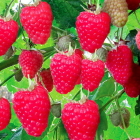
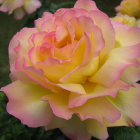
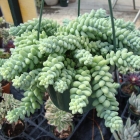
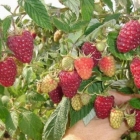
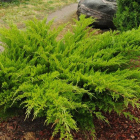
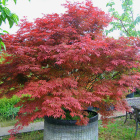
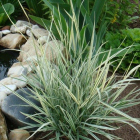
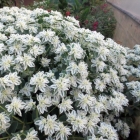
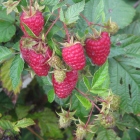
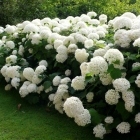
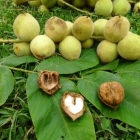
 Start a discussion ...
Start a discussion ...